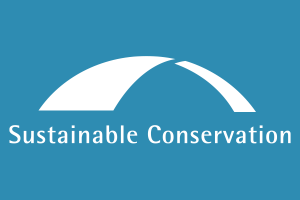
This Roadmap is designed to guide Sacramento River Basin project proponents in choosing the most efficient pathways for their restoration projects, taking advantage of the progress made to date with programmatic and other restoration-specific permitting processes.
1
Permit like the Pros
This simplified step-by-step guide outlines best practices for efficiently planning and implementing a restoration project while using restoration-specific permitting pathways where possible.
2
Process Flow Chart
This detailed decision-making flowchart guides restoration practitioners to which permits may be needed and where efficient pathways for compliance could potentially be used.
3
Permit Summary Table
This permit summary table provides information on different agencies, permits you may need, efficient pathways, and resources/tips for using them effectively.
Disclaimer: The purpose of this website is to provide guidance about the permitting process for habitat restoration projects and highlight where accelerated permitting pathways may be used. The information presented is not legal advice and should not be acted upon as such. This roadmap is not intended to serve as a substitute for referring to regulations, and users should refer to them for full procedures and requirements. It does not guarantee a project’s eligibility for a particular accelerated permitting pathway. Final authorizations will be determined by regulatory agency staff on a case-by-case basis.
1. Permit like the Pros
Access Permit like the Pros in a PDF here.
Note: This guidance does not include steps to acquire funding for project planning, implementation, or monitoring; or for hiring a construction contractor. The complexity of this process may vary depending on the complexity, size, and level of engineering involved in the project.
Develop a Conceptual Project Design and Obtain Initial Feedback
Engage partners and develop a conceptual project design that will improve ecological conditions for a potential project site. Define the project purpose and objectives. Draft a project description and site map. Establish design criteria (reference site and approved guidelines/manuals). Using the Permitting Process Flow Chart and Permit Summary Table, identify a short list of permit/approval processes relevant to your project and efficient permitting options. Permits from city or county departments for grading, building, land use, and other permits may also be needed.
As applicable, ensure cooperating landowners, coordinate with adjacent landowners and secure access to easements. Develop a plan to conduct early and meaningful consultation with California Tribes in the project area. Seek initial feedback from relevant agencies, including local agencies. Identify lead agencies for CEQA/NEPA, as applicable. Begin to develop the overall project timeline.
Complete Resource Surveys and Associated Reports
Complete biological and cultural records searches, reconnaissance surveys, and biological resource assessments. Identify any listed or protected species that may be affected by the project. Consider assuming the presence of a species if working in their habitat. It may be faster and less costly to get authorization for “take” of species than to do enough surveys to show the species is not present. Consider species work windows when refining the project timeline.
Refine List of Approvals Needed and Confirm with Regulatory Agencies
Use the Permitting Process Flow Chart and Permit Summary Table, initial feedback from agencies, and information obtained in Step 2 to refine the list of permits/approvals that will likely be needed, and to understand the relationships between those approvals.
Use restoration specific pathways wherever possible (i.e., NMFS Central Valley PBO, USFWS Statewide Restoration PBO, or other authorizations) after discussing project eligibility with agencies. Begin the CEQA/NEPA compliance process. Plan for adaptive management and maintenance and have that covered in CEQA/NEPA compliance and permits. Refine project timeline based on the approvals needed and eligibility for restoration specific pathways.
Convene Formal Pre-Application Meeting(s)
Invite agency staff (preferably those who will be writing the permits) to attend a pre-application consultation, with site visits as needed to help staff understand the project and site conditions. Meetings that bring together staff from different agencies are recommended. Receive agency feedback on the project design and environmental protection measures. Confirm with agency staff which efficient permitting pathways the project is potentially eligible for. Maintain a record of decisions and items discussed. Distribute notes to agency staff.
Modify Project Design and Submit Permit Applications
Maintain ongoing and frequent communication with agency staff. Through an iterative process, incorporate agency feedback into the project design. Some project types require a higher level of oversight and engineering review (e.g., culvert retrofits and replacement, construction/retrofitting of fishways). In permit applications, include a detailed project narrative clearly describing the impacts and anticipated ecological benefits of the project.
Project Authorization, Implementation, and Post-Construction Phase
After the project is authorized, begin construction and complete permit compliance monitoring and reporting, as required. Permit conditions are applied and implemented during this step, which may require engagement with regulators to interpret and adjust permit conditions to fit construction conditions or situations that may arise during project implementation. Complete post-construction monitoring and reporting as required.
Tools for navigating restoration permitting in the Sacramento River Basin
These tools are intended to guide project proponents to the permits they may need and the available efficient pathways they may pursue. Please open the Permitting Process Flow Chart and Permit Summary Table in Full Screen for the best user experience. Use your mouse to guide yourself through the permit process flow chart. Following the conceptual design and resource survey steps in the process described above, look within each category to see if your project applies. Review the companion table to learn more about each agency/authority, when different regulations are triggered, and options for compliance.
2. Permitting Process Flow Chart
3. Permit Summary Table
Acknowledgments
The Roadmap for Restoration project seeks to leverage the Accelerating Restoration program’s decades-long efforts to collaboratively develop efficient permitting pathways for restoration. In partnership with the Floodplain Forward Coalition, the project’s goal is help to scale up floodplain reactivation by assisting landowners, NGOs, and agencies implement Sacramento Valley fishery and floodplain restoration actions by applying new restoration-specific regulatory processes and recommending ways to make further improvements.
Development of this web page and associated materials was undertaken through a contract with the Northern California Water Association, funded by a U.S. Bureau of Reclamation Cooperative Agreement administered by Reclamation District 108.
We would like to thank the following reviewers of this web page and materials: Alnus Ecological, California Department of Fish and Wildlife, California Trout, Central Valley Flood Protection Board, Central Valley Regional Water Quality Control Board, Delta Stewardship Council, Ducks Unlimited, Environmental Science Associates, Kjeldsen, Sinnock & Neudeck, Inc., State Water Resources Control Board, U.S. Army Corps of Engineers, and the U.S. Fish and Wildlife Service.

Sustainable Conservation
Sustainable Conservation advances the collaborative stewardship of California’s land, air, and water for the benefit of nature and people. Since 1993, it has brought together business, landowners, and government to steward the resources that all Californians depend on in ways that make economic sense.
Floodplain Forward Coalition
The Floodplain Forward Coalition is an innovative collaboration between 27 organizations based on conservation, biology, water management, farming, and local government. By working together to find the best possible solutions, we can create vibrant landscapes and healthy California river systems for generations to come.

